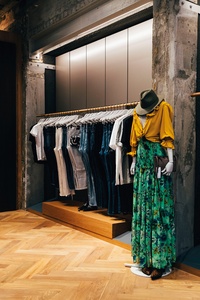In focus: Superette
Mark Simpson, joint creative director at Melbourne’s DesignOffice, talks to Interior magazine about the firm's new Auckland fit-out for retailer Superette.
Interior: Do you have a personal philosophy when it comes to design?
Mark Simpson (MS): Not something which is easy to distil! Essentially, for us, it comes down to human experience and the connection with people: how you use a space, how it makes you feel, how it looks, how it feels, how it functions. We’re not big-gesture people and are really interested in the grain of design solutions and the thinking behind them. Most good projects have killer diagrams behind them!
Interior: What was DesignOffice‘s particular inspirations for the Superette fit-out?

MS: The existing space itself was a huge part of the design approach here. The high ceilings, original timber columns and beams, and expansive windows created a great canvas to work with. We didn’t want to lose the raw appeal of the space and its materiality. We worked to create an environment which would feel effortless, considered, tactile and warm. The new ceiling lining and flooring are designed to feel as though they might have been part of the original building. Some of the design approach takes cues from apartment and hotel design, layering materials, tones and textures to create a space which is both confident and comfortable.
Interior: Were there any challenges with this project and, if so, what were they?
MS: The ceilings have a fire-rating requirement, which means there were issues with fixing anything to them and finding space for cables and ducts. The windows and concrete structure also presented a challenge. They are amazing assets and make the space but they mean that there aren’t actually any walls to display the collection on. This led to the design solutions which embrace both and present the range with them as a backdrop.
Interior: What do you see for the future of design?
MS: I think there is an increasing focus on quality and longevity. In an increasingly digital and fast-paced age, we welcome an approach to design which is not fashion based but underpinned by a consideration of the ways in which interiors and buildings may evolve and change over time. Adaptability to suit changing needs, consideration of how materials will age, and the ability to layer and adjust environments over time are all important considerations for how we approach a brief.
This article first appeared in Interior magazine.














